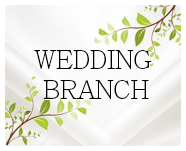It’s the most wonderful time of the year – for a wedding! If everyone comes together at this time of year, so why not make the most of it and celebrate your nuptials, too? We love a Christmas Wedding here, so here are some of our favourite theme ideas to get you in the festive spirit…
First off, let’s think about Christmas colours – if you want to avoid the traditional greens and reds associated with the season, then there are loads of modern winter options for you to consider. We love the look of berry shades such as deep reds and purples interspersed with winter whites. It’s a chic option for a Christmas wedding that feels luxurious and festive. Purple calla lilies are a sophisticated choice, and you won’t need many of them to create an impact. Talk to your florist about what will work for you.
If you’re having a late afternoon wedding then it’s going to get dark early, so why not dress your bridesmaids in deep jewel tones that will look great in the evening? Plums and aubergines are a beautiful option in cosy, low lighting. For bridesmaids gifts you could gift them a contrasting pashmina to snuggle into. Remember that shoes don’t have to match– in fact it’s better and more on trend if they offer a pop of colour. If you feel like being minimal, then just having white and silver for your colour scheme makes a perfect Christmas theme. You could dress your maids in winter white and accessorise with silver and diamante earrings, bracelets or belts.
For Wedding Decoration and Design we think a beautifully decorated Christmas tree is an absolute must at both your ceremony and your venue. Use the wedding colours you’ve chosen for your tree decorations. Whites, silvers, golds and berry shades are classic and chic, while bright jewel shades of turquoise, emerald, ruby and amethyst will also look wonderful.
Christmas is the best time of year to splash out on great food and drink, so serve your guests a festive feast! You could offer your guests mulled wine and hot spiced apple juice as they arrive at your reception, with mini sausages to nibble on. A version of Christmas dinner is a natural choice for your main meal. Most people love a roast – and it doesn’t have to be turkey. If you’re having a buffet you could serve up the main course carvery style, so as well as the traditional turkey with all the trimmings, you could offer a large ham and a vegetarian option. For dessert, the options are endless – Christmas pudding, mince pies, Yule log, trifle… our mouths are watering just thinking about it! And if your wedding budget is tight, instead of favours, just put a Christmas cracker at everyone’s place – you could even personalise them beforehand if you have time, so that it doubles as a place name.
Keeping little ones occupied at a wedding will make their parents eternally grateful to you and a Christmas theme gives you some ready-made ideas. First off, you could have Father Christmas for a visit (maybe before the wedding breakfast whilst the adults are enjoying drinks and canapés) and give the kids Christmas gifts to play with throughout the meal. Alternatively have a chill-out room and play Christmas-themed DVDs – we’re thinking Polar Express, The Snowman, and The Grinch. This will leave you and your grown-up guests free to enjoy your amazing wedding day.














